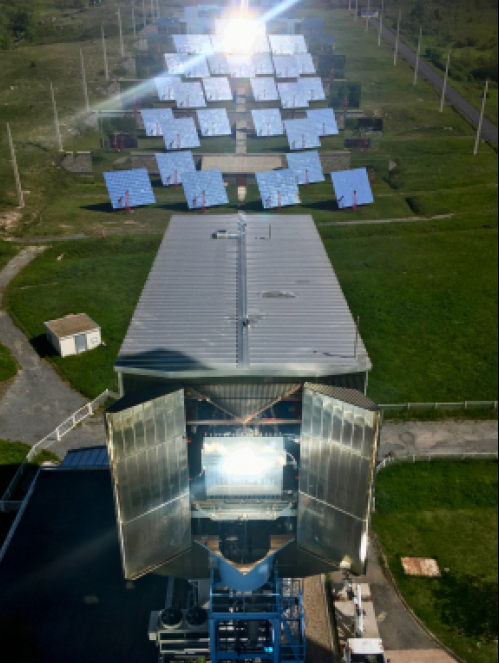 The 1 MW CNRS solar furnace
The 1 MW CNRS solar furnace
The Joint Programme was formally launched in November 2011; nevertheless, main participants held beforehand a series of preparatory meetings aiming at shaping the content of the JP research programme.
The overall objective of this JP is to integrate and coordinate the scientific collaboration among the leading European research institutions in CSP in order to contribute to the achievement of the targets initially set by the "Solar Thermal Electricity-European Industrial Initiative" (STE-EII) and, later on, by the SET-Plan:
- Supporting the STE industry, in the short term, to achieve significant cost reductions, to increase commercial deployment worldwide and, in the medium term, through the integration of national and European road-maps.
- Clustering of European R&D activities on CSP/STE to develop exploitable breakthrough technologies, novel concepts and innovative configurations enabling improvements in system efficiency and final cost. Significant effort will be devoted to Thermal Energy Storage (TES) as a means to provide low carbon base-load and backup power.
- Defining a limited and clear priority of scientific and technological targets/challenges in each current CSP/STE technology (JP-CSP Sub-Programmes) for the effective cost reduction and increase benefits in social and environmental impact.
- Increasing the integration of CSP into the energy system through cost-effective solutions supporting the decarbonisation of all main energy sectors, including residential/industrial process heat applications and transport through thermal and chemical storage (thermochemical production of solar fuels, power-to-gas, power-to-liquids).
- Addressing all previous challenges in the context of aligned European and Member States Research and Innovation objectives to leverage the research potential and optimise integrated resources in the CSP/STE field at European level.
The JP was awarded with an EC grant (FP7) for running an Integrated Research Programme (IRP) on CSP technologies and, later on, with an ECRIA (H2020) grant on Solar Heat for Industrial Processes.